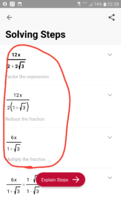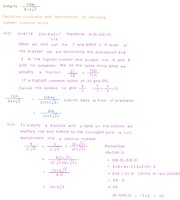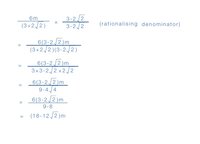In the denominator, it starts as 2+2 sqrt 3.
... 2+2 = 4, of course.
Then before reducing the denominator and numerator by 2, it gets converted to 2*1 sqrt 3.
... But 2*1 = 2.
Why does this work? Would you help me to understand it? My brother was lost on this one too.
Thanks.
... 2+2 = 4, of course.
Then before reducing the denominator and numerator by 2, it gets converted to 2*1 sqrt 3.
... But 2*1 = 2.
Why does this work? Would you help me to understand it? My brother was lost on this one too.
Thanks.
Attachments
Last edited:



